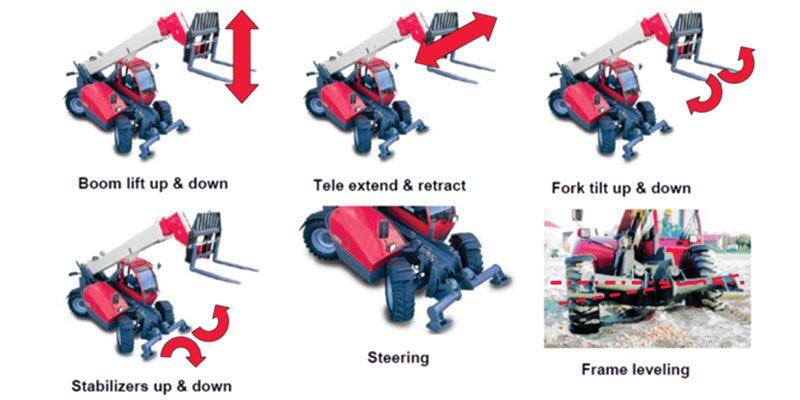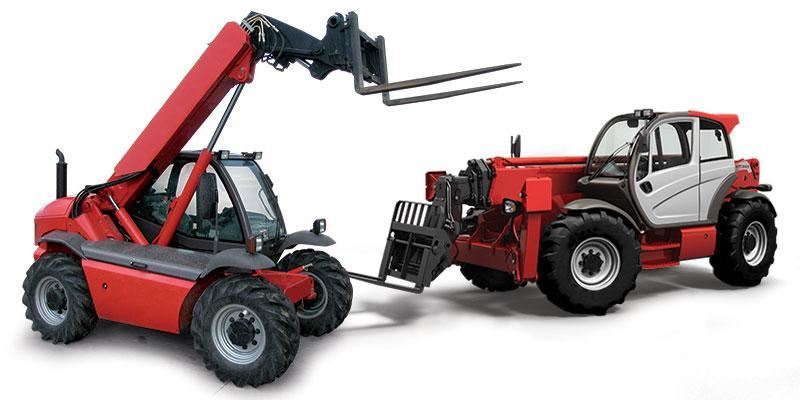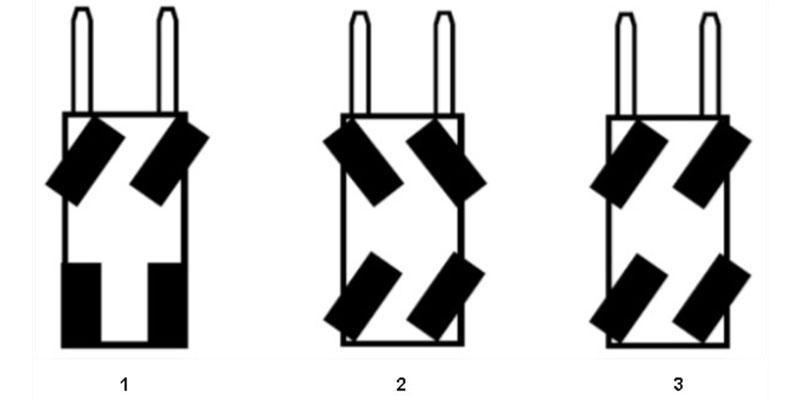When do you use a telehandler?
What is a telehandler?
Have you ever heard of a telehandler? This is a machine that can reach places other lifting equipment can't. The machine is equipped with a telescopic boom, designed to lift and move heavy loads. Do you often need to lift heavy loads? Or do you need a versatile machine? Then definitely keep reading to find out what the telehandler has to offer you.
What do you use a telehandler for?
The main advantage of a telehandler is that it is multifunctional. You can use your telehandler for a wide range of tasks. By means of the right attachment, you can easily turn it into a lift truck, aerial work platform, tractor, earth-moving machine or crane.
The telehandler has six hydraulic functions (see photograph 1).
- Boom lift up & down: the telescopic boom moves up and down.
- Boom extend & retract: the telescopic booms extends and retracts.
- Fork tilt up & down: the forks tilt forwards and backwards.
- Stabilisers up & down: extend and retract the stabilisers.
- Steering: the telehandler offers three types of steering that are explained further down in the article.
- Frame levelling: on an unstable surface, the machine is placed level by means of the axle.

Photograph 1: hydraulic functions
Thank to its wide off-road tyres, the telehandler can be used on any terrain. In the agricultural sector, for instance, the machine proves its usefulness in the field, on the yard and in the stables of the farm.
The high load capacity is another extra benefit of the telehandler: it allows it to lift heavy loads. The stabilisers provide the telehandler with a more stable stance, allowing it to extend the load even further.
Not convinced of the versatility of this machine yet? The machine is also multifunctional thanks to the availability of different attachments. By mounting various forks, skips, clamps, hooks ... to the telescopic boom, you can give the telehandler a completely new use in minutes.
What types exist?
A fixed telehandler is a telehandler that has a fixed cab and telescopic boom. The cab of this telehandler can't rotate (see photograph 2 on the left). This type is especially suitable if you often have to move heavy loads. The fixed telehandlers consist of multiple categories:
- Super compact and compact: the super compact telehandler has a lifting capacity of 2,5 tonnes and reaches between 3,3 to 5,6 metres far. A compact telehandlers reaches up to 10 metres and can lift up to 4 tonnes.
- Standard lift and high lift: the standard lift has a working height ranging between 6 and 11 metres. The high lift telehandler has a range up to 17 metres, and can lift between 3,6 and 4 tonnes.
- High load: the lift capacity of this machine ranges between 5,2 and 7,2 tonnes, with a range up to 10 metres.
A rotating telehandler is a telehandler of which the cab and telescopic boom can rotate 360°. The machine can remain stationary while the cab and telescopic boom rotate around the axis (see photograph 2 on the right). So do you need a machine that is easily manoeuvrable and that allows you to reach hard-to-reach places? In that case, opt for a rotating telehandler.

Photograph 2: fixed and rotating telehandler
The different steering types
Whether you opt for the fixed or the rotating version, a telehandler is already very manoeuvrable in any case. A telehandler offers different steering types. This is a unique function that only this machine is equipped with (also see photograph 3):
- Front-wheel steering: only the front wheels turn. This is the safest option when you use your telehandler on the road.
- Four-wheel steering: the front and rear wheels each rotate in an opposite direction. This type of steering provides the smallest turning circle, and can only be used off-road.
- Crab steering: all four wheels rotate in the same direction, allowing the telehandler to drive sideways. This is ideal when working in confined spaces, turning becomes unnecessary.

Photograph 3: steering types
How do I select the correct type of telehandler?
For each sector or each line of work, you can use a different type of telehandler. This of course depends on multiple factors.
- Sector: in what sector will you use the telehandler? Do you want to know more about the use in the agricultural sector? Then definitely read ‘The telehandler and its usability in the agricultural sector’
- Type of work: do you only use the telehandler sporadically to lift small loads or do you use the machine to always position heavy loads far away?
Are you curious to find out what else a telehandler can do, and what surplus value it can offer in comparison to other machines? In that case, also read ‘A telehandler? The benefits compared to other machines’.
Karen, TVH blogger